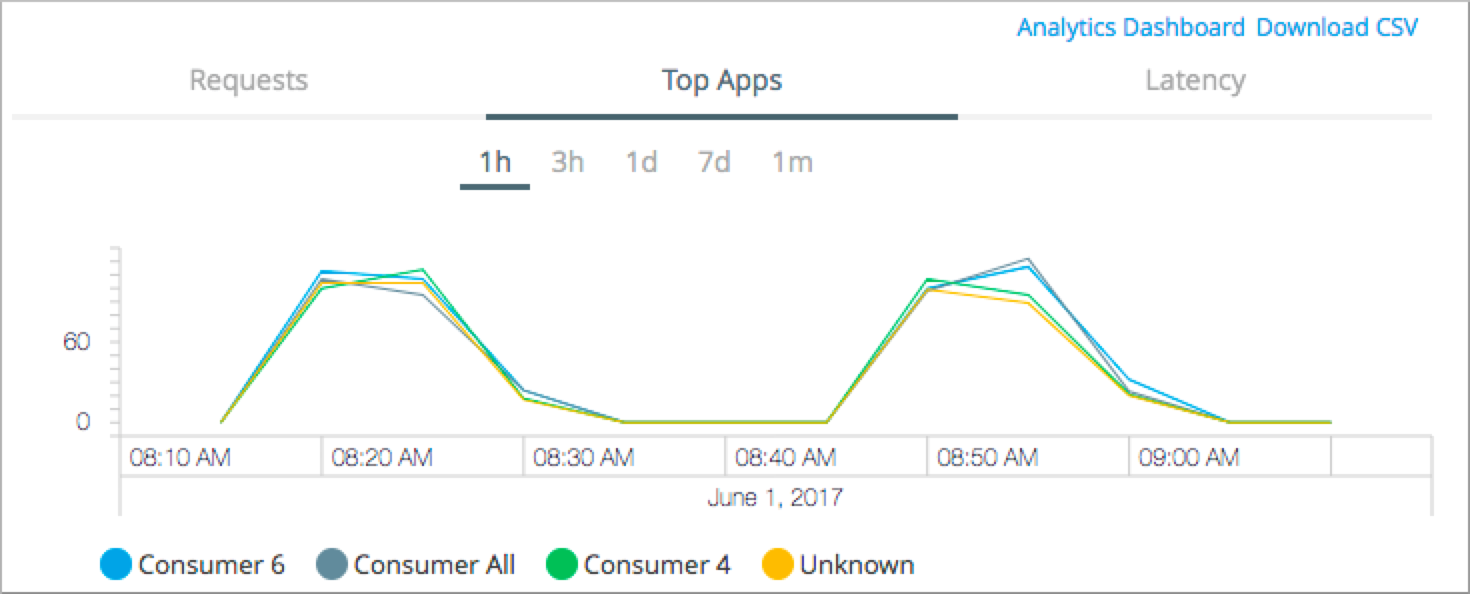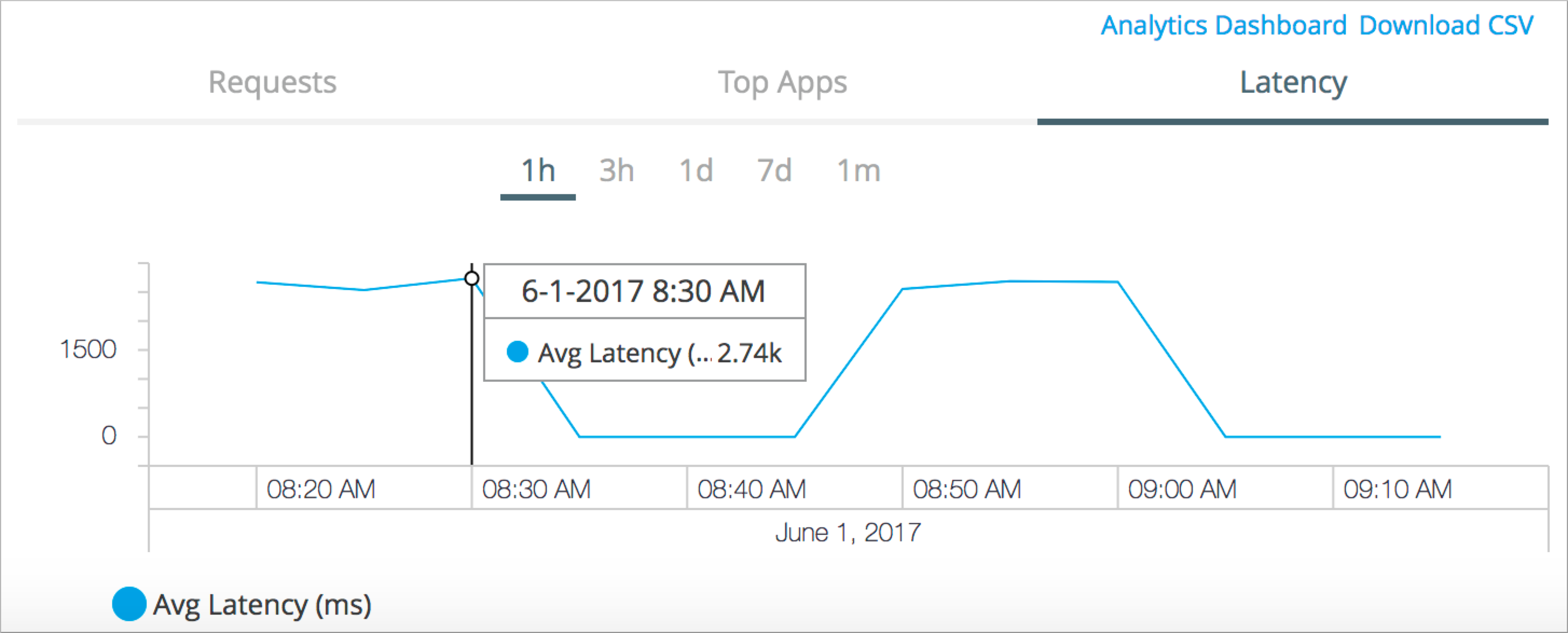
Reviewing API Manager Mule API Analytics Charts Usage
Mule API Analytics provides a summary in chart form of requests, top apps, and latency for 1 hour, 3 hours, 1 day, 7 days, or 1 month. This data is available for 30 days. To view the Mule API Analytics chart, in API Manager, click the instance name of a deployed API.
Note: To view Mule API Analytics charts, users need View APIs Configuration permission. See To Set Permissions.
Reviewing Requests Summary Chart
The requests summary chart lists the total number of requests to your API instance by the duration you choose. The chart shows the HTTP status codes specified by W3C. For example:

Graph lines are provided for:
-
Green - Successful requests that returned a status code from 1xx to 3xx.
-
Dark Gray - Client failed requests that returned a status code of 4xx.
-
Blue - Server failed requests that returned a status code of 5xx.
Reviewing Top Apps Summary Chart
The top apps summary chart lists the number of requests made to the API instance by each application for the top 5 applications calling that API instance. Each color represents one of the top 5 applications accessing the API. The y-axis plots the number of calls made to the API instance.
The graph lists the number of requests over the duration you select, for example:

Reviewing Latency Summary Chart
The latency summary chart lists the average API latency for the period selected. The higher the latency, the lower the performance. The y-axis in the chart lists the average latency in milliseconds (ms).
The following example shows that the worst average performance in the one-hour period was at 8:30 am.

Including Policy Violations in Charts
Note: Users must have the View Policies permission set to view policies or edit a Policy Violation alert.
Enable or disable the tracking of policy violations by checking the Include Policy Violations checkbox on an Mule API Analytics chart screen. The chart shows traffic rejected, or not rejected, by a policy.




